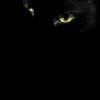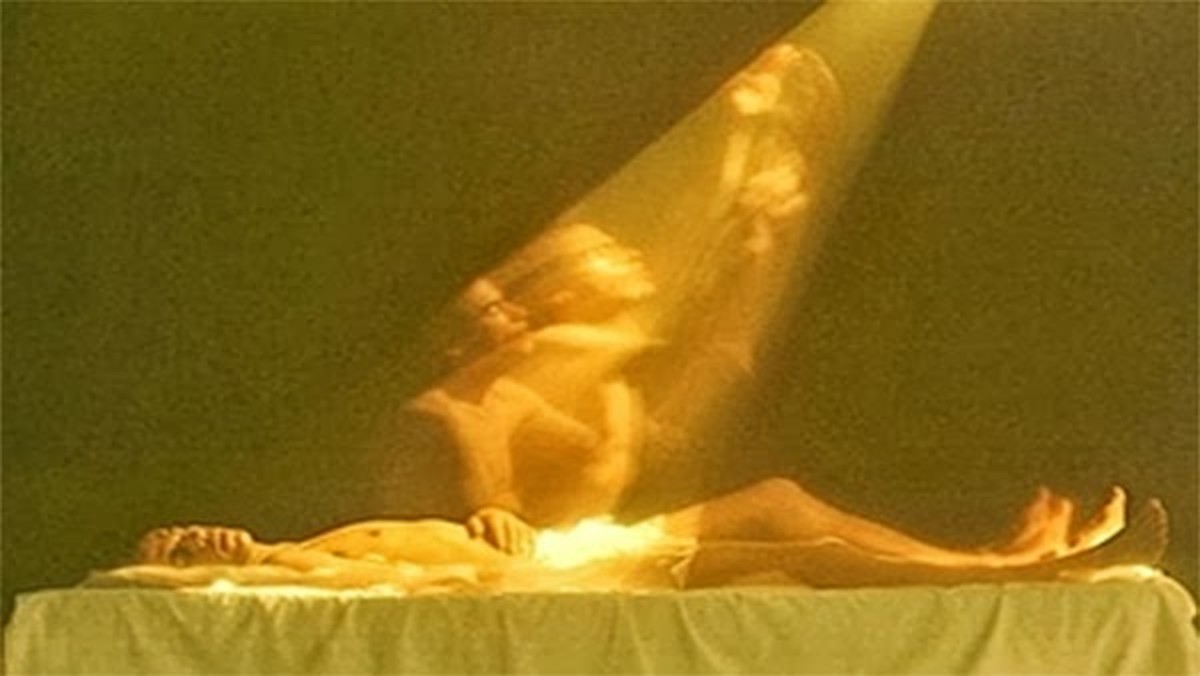Photography Chinese translated into English
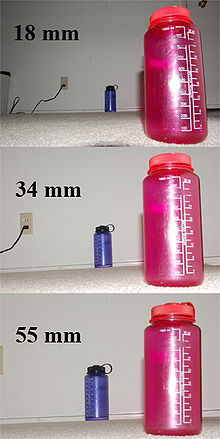
Focal, Shudder Speed, Lens, Fish-Eye... WHAT?
My D40 was a gift from heaven... If I would just know how to use it! grin
I had never figured out why my Dad would care an entire camera bag with him... I ended up having to buy one.
I do have to say that I miss zooming into things without having to speed-change lenses, but the quality of the pictures even Amateur me can take with this camera is breath-taking!
And after reading up half a docent words from the manual that just didn't tell me a thing, I figured some things out.
The first obstacle was to find another lens. Mine only went so far and my rose growing up to my roof became the first beautiful object in a 'safe' distance I had to pull closer without having to climb up to the roof!
So after searching the internet I found several lenses on Amazon.com and took a closer look. I ended up with the 18-55mm coming with the camera and a 70-300mm I found cheaper from Sigma than Nikon.
I won't tell you how long it took me to look up half the stuff written on there... and how much of it makes any sense to somebody like me that doesn't speak photography Chinese just yet!
So while I am searching for a replacement lens for my dog-broke-it 18-55mm, here are some translations and things I learned!
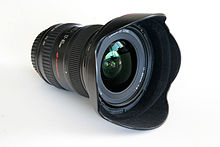
The Wide-Angle Lens
Of course any explanation about one photography Chinese word had to include any number of more Chinese words, so bear with me!
A wide-angle lens has a smaller focal length ("The distance over which initially collimated rays are brought to a focus." ("Focal Length", Wikipedia.org). It will allow you to include more of the scene and is practical when taking pictures of landscapes or architecture.
It also comes in handy when trying to show the difference between size or distance between the object and the background.
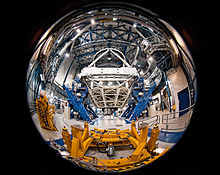
Fish-Eye Lens
A Fish-Eye lens is a wide-angle lens that adds a hemispherical view to the picture. It was originally used in meteorology for the study of cloud formations. It is also called whole-sky lens and soon became popular for the unique and distorted looking pictures.
When used for landscapes, it kind of suggests the curve of Earth.
Hemispherical photography is widely used for scientific studies like studying plant canopy geometry or when trying to calculate the near-ground solar radiation.
This lens would make for some breath-taking pictures when trying to capture the evening sky (especially on somewhat cloudy days) with either great cloud formations or even greater sunrises or sundowns!
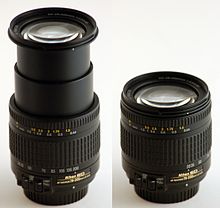
The Zoom Lens
A zoom lens gives you more than one focal length and thus more than one angle of view. For us Beginners it is pretty much a lens that allows you to 'zoom in' items at greater distance and still get them 'focused' and clear.
With other words, they pretty much magnify things we would otherwise have to go to; or in case of my rose: climb after!
While my Sigma tends to be less clear on longer distances, my zoom lens (70-300mm) allowed some great pictures at the zoo when the animals were a bit further away. Considering the sizes of some of the habitats at the zoo, I was just happy to even see the animal! (I love their large or sometimes even giant habitats!)
There are two types of zoom, tough:
Optical zoom is pretty much done by adjusting the focal length manually.
Digital zoom is done by cropping ("removal of the outer parts of an image" ("Cropping", Wikipedia.org) an image down and reducing the centered area, but keeping the same aspect ratio ("the proportional relationship between" width and height of a shape ("Aspect Ratio", Wikipedia.org). It is done electronically and within your camera automatically when you adjust your digital zoom.
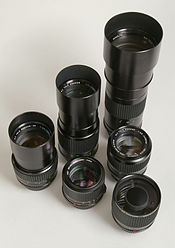
Telephoto Lens
This is an entire group of lenses in which the physical length is shorter than the focal length. To achieve that a group of special lenses called 'telephoto group' was added. It extends the light path to achieve a long-focus lens in a smaller 'body'.
These lenses are commonly used for long-range shots like catching the 'bird of prey' in the sky. When you can't physically walk up to the subject in question (like a not so social animal at the zoo), you can pull out this lens and it will help you make up for the greater distance.
My children always wanted to see the Rhinos, but with the large habitat of several acres they have at the zoo, it seems almost impossible. Unless you want to support the zoo and pay the quarters needed for one of them binoculars they have installed there.
I use a zoom lens a lot when it comes to some of the tiny flowers and insects that live in my own zoo at home (aka my backyard). Or when I try to catch the dear and geese around my pond. While the geese actually came up to my porch to eat the grass a few times, the local deer is (hopefully) well aware of my neighbors!

Macro Lens
A macro lens shoots pictures where the subject on the negative (if it would exist. I have a digital camera.) would be larger than the actual subject is in reality. The ratio between the two is called the 'reproduction ration'.
So if you want to take picture of some of the blood-sucking nuisances like mosquitoes, this lens would be perfect to you.
Shutter Speed
How long the 'target' is exposed to the camera aka the camera's shutter is open! I noticed that it can influence how clear a picture comes out.
It seems that pictures that are taken when the light isn't that great keep the shutter open longer; and normally don't come out that great.
It also changes the way how a picture comes out when you took it with a moving object. Some are in that 'fly-by' affect and some (when using a short/fast shutter speed) can get some amazing snap shots.
Pixels
Pixels are like chips or puzzle pieces. The more pixels you have, the clearer and better the picture looks. This is especially obvious when you try to up-size a picture and it becomes blurry.
In the technological labyrinth they actually have coordinates to assign them their own spot. So when you send the picture via email or such, it stays the same.
File Format
This is something that goes on between the camera and the computer. I had an older digital camera that saved all pictures as Bitmaps, which take A LOT of space on your computer.
If you open those pictures in MS Paint and save them as JPEGs, you end up with less computer space, but you can't 'paint' on them anymore. White areas will have shadows and lines no longer come out as clear as before.
GIFs are usually moving 'pictures' and can be a bit of a pain in the rear.
Most of my cameras now save in JPEG format; saving me space on my SD card.
SD Cards
My cameras use SD Cards that you can now get at most stores at 8GB or even 16GB for less than $20. Micro-SD Cars are used for some satellite radios, cell phones and music players.
The newer HDSC Cards are very expensive and not every camera can handle them.
Frame Rate aka Frames per Second
I wanted a camera that can take multiple pictures in a short period of time. When you take pictures of dogs that are hyper or excited about being finally out of their kennel, you will have a hard time to get them to stand still. Shooting multiple pictures very fast will allow you pick the 'good' picture(s) afterwards.
My camera takes 2.5 pictures per second by simply holding down the 'tricker'!
Batteries
I can actually look up how many pictures my camera can roughly take before it's battery dies; 470.
Part of choosing a camera is the decision about the type of battery it uses. The little camera batteries that look almost like short AAs can get expensive. My current cameras either take AAs (still expensive) or have rechargeable batteries.
The great thing about rechargeable batteries is that if you find them online (like amazon.com and e-bay.com), you can get some like mine for ~$5 a piece or less. Compare that to having to carry around packs and packs of AAs!
Preserving Beauty
I will probably add more to this throughout my learning process!
When buying a camera, especially a more expensive one, find somebody that knows something about them and let them help you chose. Tell them what you want to do and they can help you decide between the tons of models available.
If you are not a journalist, you don't need a $3,000 camera. And if you don't know much about it, start out with a smaller one and learn!
Taking pictures is a ton of fun and preserves some great moments and some extraordinary beauty! It may not make up for seeing it with your own eyes, but it gives you a great memory!
Photography Tips, Essential Skills, Quickly Transform Your Photos, by Karl Taylor
Landscape Photography Tips and Tricks
National Geographic Explorer - My Dream
- Photo Tips, Photos, Galleries, Videos, Photography - National Geographic
Photo tips, quick tips, expert advice, professional photographers, photos, videos, wallpapers, and more from National Geographic.
Digital Photography School - Some interesting Info
- Digital Photography Tips: Digital Photography School
Welcome to Digital Photography School! Discover how to use your digital camera with our Digital Photography Tips. We are a community of photographers of all experience levels who come together to learn, share and grow in our understanding of photogra
Picturecorrect.com - Some breathtaking Pictures
- PictureCorrect - Photography Tips and Techniques
Photography Tips and Techniques
Tutorials and much more!
A daily Dose of Beauty - NG's PICTURE OF THE DAY!
- Snowy Owl Picture – Bird Photo - National Geographic Photo of the Day
See a photo of a snowy owl in a winter storm, from National Geographic.
